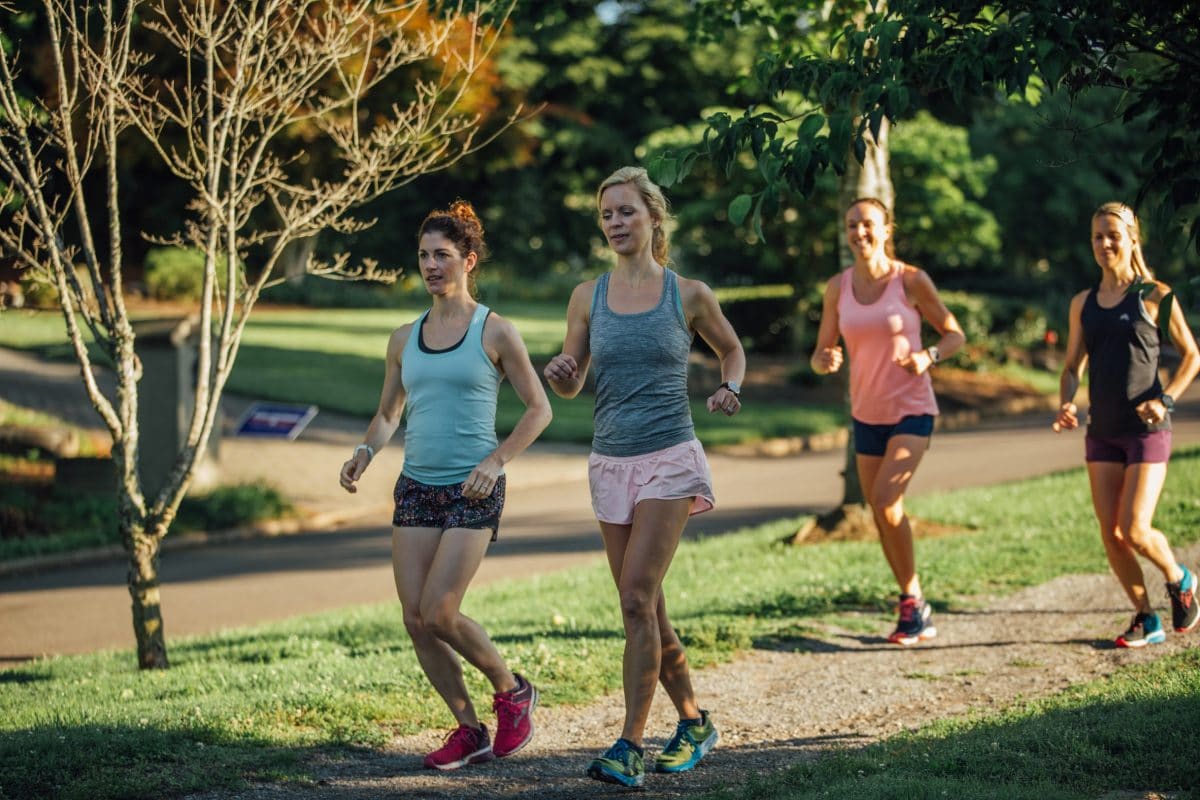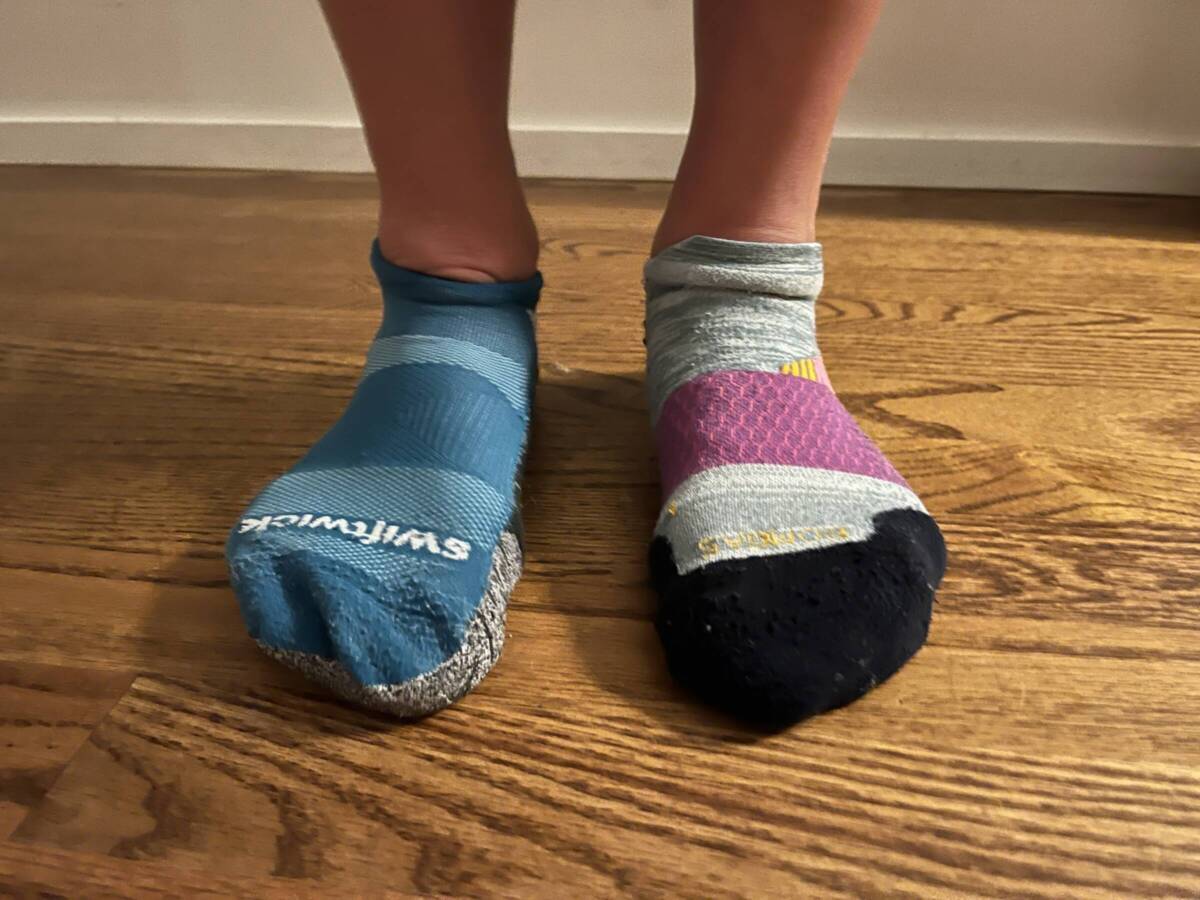How to Stay in Running Shape with No Race
You don’t have to have a race on the horizon to stay in running shape or even racing shape.

In fact, that’s what I am doing right now. My goal for 2025 is to have no running goals for 2025 except to enjoy running. When I started going after an Olympic Trials Marathon time, I fell into an injury and illness trap. For more than 5 years, I’ve cycle through being knocked down and then trying to get back to where I was. It’s become beyond frustrating and sucked the joy from running. So, I have decided to not put any more pressure on myself to perform. Instead, I am focusing on running what feels right for my mind and my body.
Table of contents
In fact, running with no race on the schedule can be very liberating. No stressing when sick kids or your crazy life make you miss your big workout. You can stay in shape or get in shape on your life’s own timeline, not a looming race deadline. I think training without a race is fun and an opportunity to work on weaknesses and fall in love with the PROCESS of running—devoid from all the data and race result obsession.
Training without a Race Tips
Here are some principles for training without a race:
Variety is key.
When training without a race you want to focus on what is called a “multi-faceted base.”
A multi-faceted base means that you do all types of training runs so that you are honing all your metabolic systems. You’re running:
- fast to sharpen your VO2 Max,
- long to build that aerobic strength, and
- comfortably hard to push that lactate threshold.
The main differences between this type of training and training for a race is that there is less specificity in your training. You won’t be overly focusing on a certain race pace.
Another big difference is that you will not be progressively building mileage. Your weekly volume will stay about the same and thus the volume of intense running will stay about the same as well.
Build mileage.
Alternatively, if you’re body isn’t used to running a lot. You can choose to use your off-season to build mileage.
Thus, your off-season becomes a big base phase in which you gradually increase mileage by about ten percent week to week. Every third or fourth week, you reduce the mileage by 20 to 30 percent to absorb the training and then go back up.
It is still a good idea to incorporate some speed into your training in the form of strides, surges, hills, progressions, and fast finishes, for example.
Do the small stuff.
When training without a race, you have more time to focus on the things you don’t have time for in-season. Now is the time to prioritize strength training, mobility work, yoga, and even cross-training.
Strengthen your weaknesses.
Off-season is the time to assess your weaknesses from your past training blocks:
- What races did you no perform well in?
- What workouts did you falter in?
- Did you run your easy runs too fast?
- Did you not nail your nutrition?
- Are hills the bane of your existence?
- Does the feedback of your watch kill your mental state?
- Do you need more confidence and less Strava stalking?
Training Ingredients for Running without a Race
If you are running without a race but want to stay focused, in running shape and racing shape, then here are the types of run your training schedule should include.
- A weekly long run. One time per week you should do a long run that is about 30 percent of your weekly mileage. This run should be done at an easy pace.
- Strides, surges, and hill strides. Short bursts of speed help with your faster running, VO2 max, injury prevention, muscle recruitment, neuromuscular fitness, and more. Aim to do strides at least two times per week.
- Fartleks. Fartlek is Swedish for “speed play.” It is an unstructured run in which you are running continuously with faster running interspersed. Fartleks are a great way to strengthen your aerobic and anaerobic systems without the pressure of specific split times.
- Lactate Threshold runs. Lactate Threshold runs that push your lactate threshold (the time of which lactate accumulates faster in the blood than your body can clear it) help you run faster for longer. These runs are in the form of tempo runs where you are running at a moderately hard pace or a 6-7/10 on the RPE scale.
- Hill workouts. Hills repeats and hilly routes do an amazing job strengthening your legs and aerobic system without as much stress on the body as fast running on flat surfaces.
- Progression runs. These runs are where you run progressively faster over the course of your run. They help teach your body how to change gears to faster running when on tired legs. This builds fatigue resistance, something that is especially useful for long-distance runners.
- Fast finishes. Especially early in your off-season and on cutback weeks (where you have reduced mileage), do a run where you finish about one minute faster than your easy pace. This increases fatigue resistance, endurance power, and strength.
- Combo workouts. Now is the time to have fun with your workouts! So, try combination workouts in which you do intervals at different race paces such as 2-mile repeats where you switch up the paces between 10k, half marathon, and marathon.
- Time Trials. Every 6 to 8 weeks, perform a time trial to get a gauge of your fitness. This can be a timed run of 20 to 30 minutes you do every couple of months. Or it could be a set distance such as a 5k or 10k.
Focus on how the workout felt, not the result. If it feels easier, then your training is working!
Sample Workouts to Stay in Good Running Shape
Here are some sample workouts to keep you in racing shape when you aren’t racing. Scale these workouts to fit your fitness level. Warm-up and cool-down for 1-2 miles.
Fartleks:
- 15 x 1 min hard, 1 min easy
- 2 x 4-3-2-1 with a halftime recovery
- 5-4-3-2-1 hard with a halftime recovery
Tempos:
- 20-minute tempo
- 30-minute tempo
- 2 X 20-minute tempo
Critical Velocity:
- 8-10 x 2 minutes at CV effort, 2-min recovery jog
- 6-8 x 3 minutes at CV effort, 1.5 min easy jog
- 6-8 x 800m at CV pace, with a 90-second recovery jog
Cruise intervals:
- 8 x 3 minutes at tempo pace with 30-second rest
- 6 x 5 minutes at tempo pace with 1-minute rest
- 2 X 15 minute with 3 min rest
Hill workouts:
- Hilly route with the hills hard and downhills easy
- 6 x 2 min hill with the hill hard and downhills easy
- 12 x 200-meter hill with the hill hard and downhills easy
Combo Workouts:
- 1 mile easy, 1-mile marathon pace in a long run
- 2-mile repeats with a second mile faster (half marathon pace (hmp, 10k) or changing pace for each repeat (mp, hmp, 10k; hmp, 10k, hmp)
- 800s at mp, 10k, hmp, and 5k effort
FAQs about Staying in Shape without a Race on the Schedule
How much should I run when not training for a race?
If you aren’t training for a specific race, you should run the volume of what feels doable for you. This is an opportunity to run for the sake of loving to run.
Look at your schedule. Do you have 45 minutes in the morning to run before the kids get up or work? Then do that.
Alternatively, you can think about what mileage felt comfortable when you were training for a race. Did running 40 miles a week make you feel fit and energized? Then run that magic mileage.We all have mileage that makes us feel like we are in running shape but not riding the red line. This is a great mileage to run in the off-season to have you ready to race when the time comes.
How do I build running from nothing?
You build running from nothing by starting with walking and then run/walking and then gradually increasing the time you run and decreasing the time you walk.
You can read detailed tips on how to start running here. Also, check out my FREE walk to run training plans and some fun facts about how long it takes to lose running fitness.
How can I practice running without a track?
You don’t need a running track to run! You can run just by feel. Put your shoes on and go out for however long your body and mind want. Or, if that freedom is too much for you, you can get a GPS watch or download a running app that Stravathat tells you how far you are running. Map My Run gives splits in the hundredths. So, if you have 200s, you run .12 on the watch or app. For 400s, you run .25; 800s you run .5 and so on.
Try to find a flat, straight road or path to run intervals. This mimics a track best.
How do you train if you don’t have a race?
How to train without a race—that is the question. And the answer is both simple and complex (and check out my detailed maintenance running plan here).
Generally speaking, without a race on the calendar, you can either:
- work on increasing mileage (and keep intensity the same)
- or work on intensity (and keep mileage the same).
For longer breaks, you can cycle between the two. Your workouts should focus on general fitness, not race pace. This means lots of fartleks, progressions, hills, and lactate threshold runs every 6 weeks.
Running raceless or even taking a break from running can stoke your pure love of the sport. And a fringe benefit may be that you get faster without even realizing it—because you are running for fun, focusing on weaknesses, and/or by feel.
Do you ever keep training without a race on the calendar?






